24 engaging training games and activities
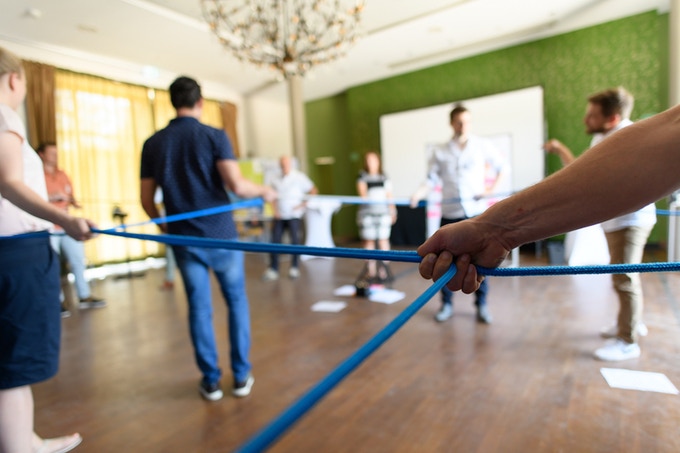
Creating the ideal conditions for learning isn’t easy. Trainers need to balance information sharing and theory with experiential activities in order to create effective learning experiences.
Training games are a great way to engage trainees with interactive activities that help facilitate the learning process. In this guide, we'll share our favourite training activities alongside tips for engaging trainees. You'll leave with practical ideas for improving your next employee training and add new methods to your toolkit. Let’s dive in!
What are training games and activities?
Training games and activities are interactive activities designed to engage trainees and create a more memorable and engaging learning experience.
These games are experiential in nature, and they invite trainees to actively participate in a task or game rather than just passively receive information. These kinds of training activities include group discussions, role-play games, debriefing and sharing exercises, group discussions, hand-on activities and more.
Training activities are used to help facilitate some aspect of the learning process and often correlate with one or more stages of Robert Gagné’s pricinples of effective learning.
In some scenarios, these activities can go further by asking participants to actively use knowledge they are gaining in the session or to practice soft skills too. These opportunities for interactivity are a wonderful addition to any training program.
For example, if you’re delivering feedback training to a team, you might include an activity where they practice giving each other feedback in the session. This kind of gamified training is a great way to enhance learning and build practical skills that can be used immediately after the training is complete.
On another occasion, enhancing your corporate training with a fun activity can do double duty in enabling better learning while also building team connections and communication skills.

Why use training games and activities?
According to Seymour Epstein’s cognitive experiential self-theory (CEST), our brains process and retain information in two ways: analytical-rational and intuitive-experiential.
The intuitive-experiential parts of our brain are more active when focusing on specific tasks, especially those that are physical in nature or which invoke feelings and experiences. Knowledge gained through this kind of experiential learning tends to be retained more quickly and is forgotten more slowly than other methods.
The analytical-rational parts of our brain are more active when focusing on processes, synthesizing information and making decisions .
In Seymour Epstein’s theory, our brains work best when both of these parts are working in tandem. Great training often employs various methods in order to activate both of these systems and help learners get the most out of the experience.
To simplify, adult learners can learn by passively receiving information but any learning is more effective when paired with experiential activities such as participating in tasks and games.
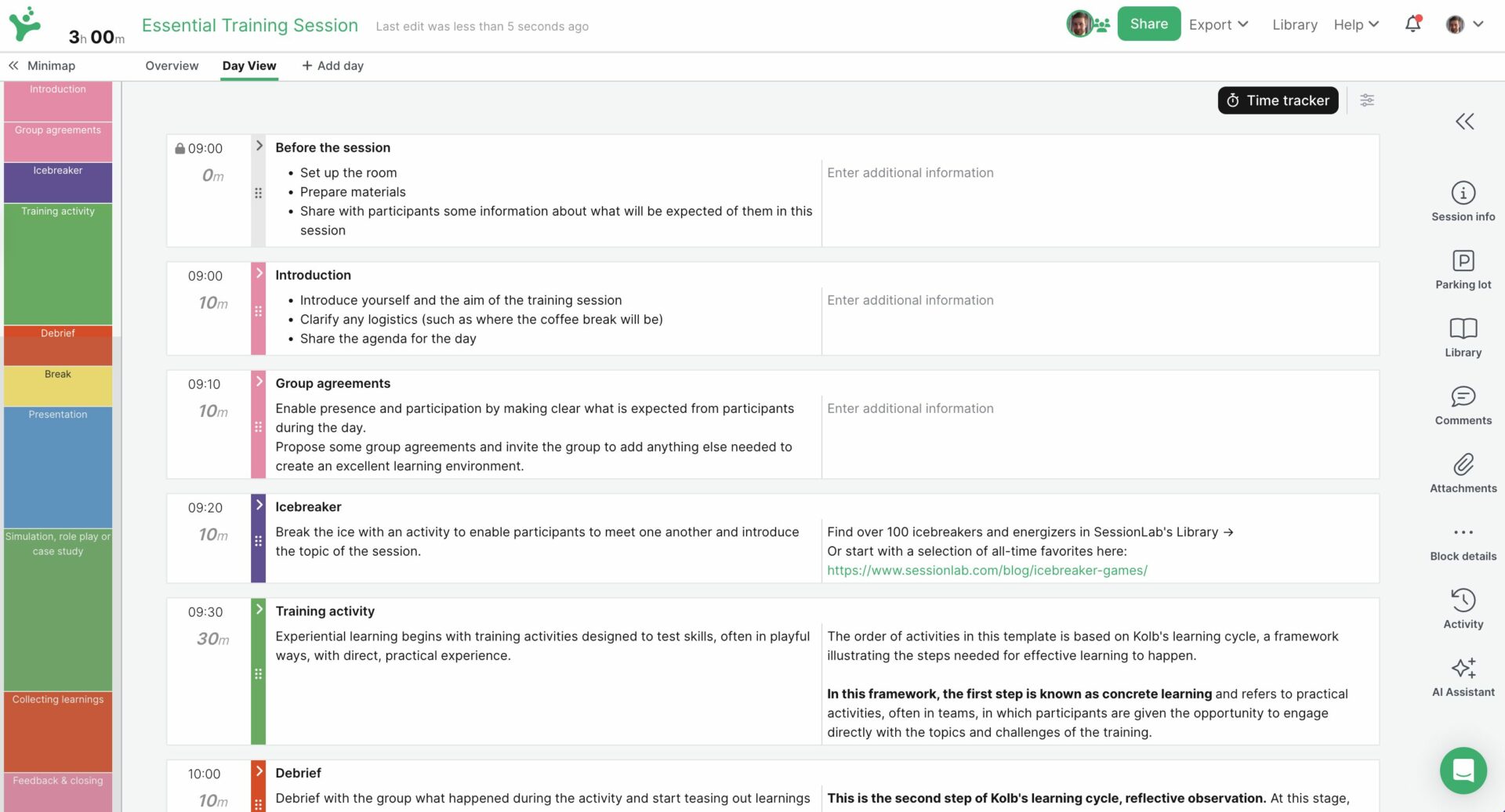
Training games are an effective way to bring that intuitive-experiential part of our brains online. They also help create space in an agenda and enhance the learning experience.
For best results, try pairing training activities with a discussion or debrief in order to also activate the analytical-rational part of the brain and help trainees retain and use the training material you provide.
However you use these games and activities, you’ll want to consider when and where to place them in your training agenda so you can create an effective learning flow and deliver a successful training program.
In SessionLab, it’s easy to create everything from a training program outline to an agenda for an individual training session. Start by dragging and dropping your training content into place.
Colour code your activities according to interaction type so you can build a balanced training session that caters to different learning styles.
When you’re ready to lead your session, it’s easy to export your agenda in the format of your choice. Create a PDF handout for your trainers and trainees or invite stakeholders to collaborate on your session directly.
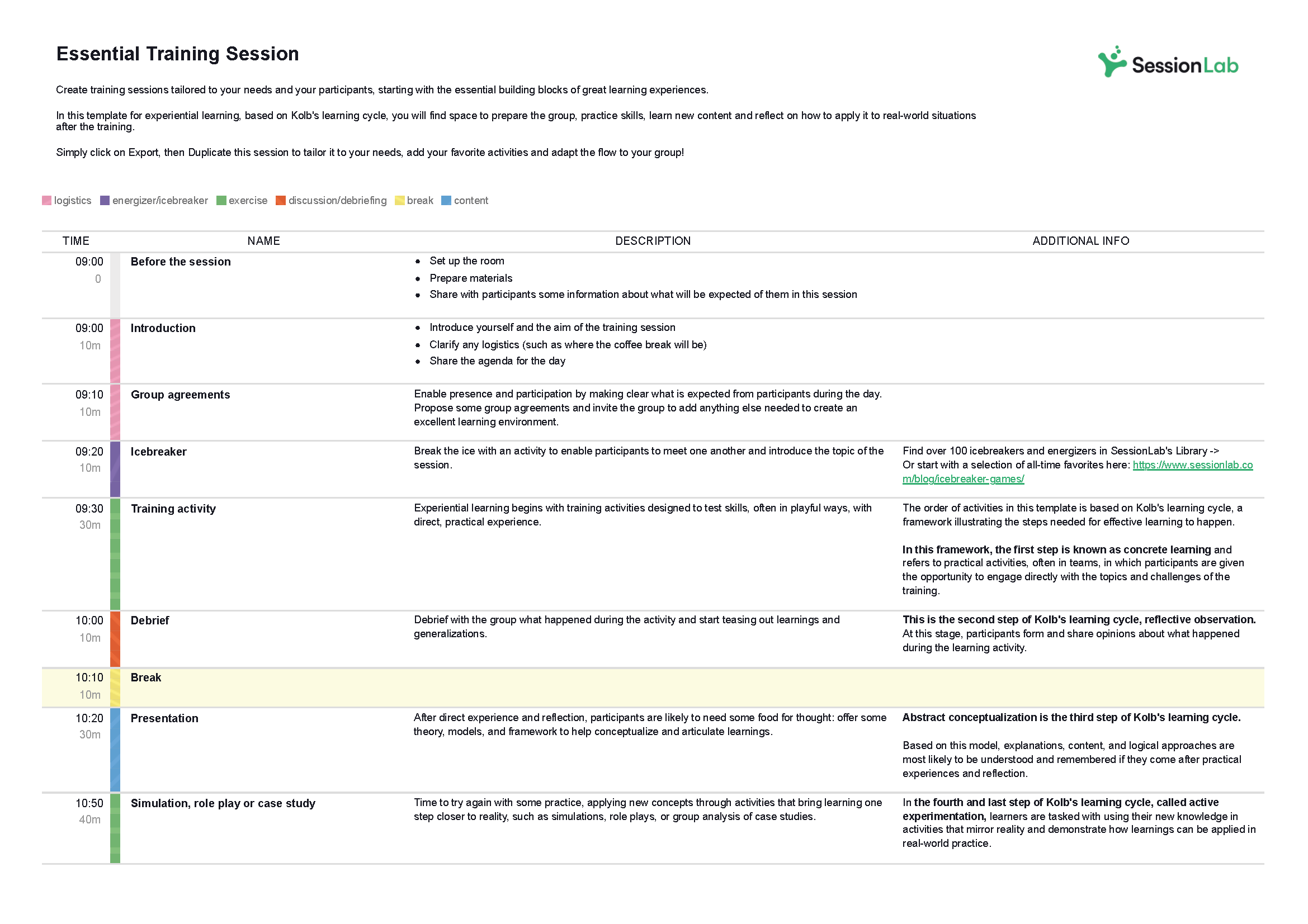
Training icebreakers
Every training session has to start somewhere. After you’ve gotten the group’s attention and outlined the objectives of the training session, this is a perfect time to break the ice and start warming up the group.
These training icebreaker activities are designed to help loosen up the group and create connections while also creating space to begin exploring the topic of your training programs.
While it might be tempting to jump right into presenting your training materials, using a training icebreaker game can ensure that you truly have the attention of your learners and that they’re best positioned to engage in learning.
Just the facts
Getting a group of trainees energized at the beginning of a training session while also getting them to talk about the topic at hand is a great use of an icebreaker. In this training icebreaker, start by defining a topic the group is going to list facts about.
For example, for training on feedback skills, the topic might be “Facts about good feedback.” Next, invite the group to sit in a circle and have each person in turn contribute a fact about the topic.
While this is easy to start with, it can be difficult to keep going around the circle without repeating a fact or introducing an opinion or unproven theory. When someone breaks the rules of the game, another member should challenge by saying “Just the facts!” and then the group will vote on whether it is a fact or not.
This is a great training icebreaker to get people warmed up while thinking critically about the topic at hand.
I Expect
Having the group share their expectations of a training session can help create alignment and spur engagement while also giving the trainer insight into how they might best serve the group.
In this ice breaker for training, start by dividing a flipchart or virtual whiteboard into four quadrants. Then ask participants to respond with what they expect from: 1. The Training, 2. The Trainer, 3. From Yourself and 4. Other Participants.
You can have participants write their responses on sticky notes and add them to the chart, or simply ask for responses and write them in the necessary place. Check back at the end to show the group what they’ve achieved in line with their expectations.
Magic Box
Training icebreaker games are often at their best when they encourage participants to begin engaging with the topic at hand while also sharing their perspective with the group.
Magic Box is an effective exercise that asks trainees to start by choosing an object from a pre-created box. Next, they’ll tell the group who they are, why they selected the object and what they think it has to do with the training ahead.
Participants are asked to think creatively about the relationship between the object and the workshop they’re about to undertake, creating engagement and allowing space for personal expression. It’s one of my favourite training icebreakers!
Best and Worst
Sharing personal experiences and encouraging curiosity at the beginning of a training session can help set the stage for learning. In this training icebreaker, start by asking each person in the group to write down one best and one worst question that they want to learn about the group. For example: what’s the worst present you’ve ever been given, what’s the best advice you ever received.
Put all the questions in a hat and have everyone pick 2 at random. Go around the circle and have everyone share their answers and related stories.
In a training environment, I tend to ask participants to add a third question relating to the topic at hand or put some extras in the hat myself: for example, what’s the worst feedback you ever received or what makes you cringe during a presentation?
One Word Method
Training icebreakers are great for helping your group to fully arrive in the space and relax into the training session to come. One Word Method is one of my favourite ice breakers as it’s easy to run, encourages creativity, and it can also be adapted to serve any topic or training session.
Start by introducing a topic of theme and let participants know that they’ll collaboratively create a sentence by each contributing one word of that sentence in order. The aim of the game is to create a sentence that makes sense and which also covers the subject or topic you’ve chosen.
This training game is especially effective at encouraging everyone in the group to speak early in the session and can help introduce a difficult subject in an approachable manner.
Who are you? The pirate ship exercise
Every member of the group brings a unique perspective to any workshop, meeting or training session. In this fun training icebreaker, participants are encouraged to consider their role and perspective and what they’ll bring to the training ahead.
Start by sharing the picture of the pirate ship and ask people to reflect on which character on the ship best represents them. You might also ask, “Which character in the image best represents how you feel about this training? Why? Put your answer in the chat”. The ensuing discussion can help break the ice while also getting the group to think about how they’ll engage with the training to come.
Training games to enable effective learning
Helping learners to learn is the goal of every educator and trainer. These training activities are designed to help create an ideal learning environment and can be used to support your main training content and get your trainees engaged early in the process.
Often, employees learn as much from each other as from a presentation, and these activities are designed to enhance employee engagement by encouraging participation and the sharing of experiences among the team.
Catch All
In Robert Gagné’s 9 principles of instructional design, he notes the importance of asking participants to recall previous learnings. This training activity from Thiagi Group is a simple game where participants are asked to recall something relevant to the topic at hand and share it with the group.
Start by getting participants to stand in a circle and choose a category relevant to your topic or training materials. Next, throw the ball to a participant who must respond by recalling something they know or have learned about the topic before throwing it to another participant. You can use this at the start of a session to gauge existing knowledge or use it after lunch to help the group recall what they did in the morning.
Walking Questions
In many training scenarios, one of the best sources of information and insights is from trainees themselves. In this training activity, you’ll invite groups to answer one anothers questions in order to close knowledge gaps and encourage proactivity in the group.
Start by giving each participant a sheet of paper at the end of a training block. Each trainee writes one open question on top of a sheet of paper. They then hand the paper to the person to their right. On the new sheet they receive, each trainee will read the question and write down any ideas or insights they might have before handing it onto the next person. The activity ends when everybody has their original sheet back, complete with ideas from everyone else in the group.
Angry Customers
The fourth stage of Kolb’s learning cycle is Active experimentation, where participants get to practice using the skills they’ve learned during the training. Role-play or simulation games are an especially effective training activity to encourage this in trainees. While the specific role-play you use will need to reflect your training topic, Angry Customers is a great example of how it’s done.
In this training game, split your team into two groups. One group will brainstorm examples of angry customer statements while the other group will brainstorm statements that might help defuse such a situation. Next, pair people from separate groups together and roleplay an angry conversation. Debrief at the end to help the group identify what worked best and how they might use these insights in real-life situations.
Pecha Kucha
It’s common for trainers to ask trainees to present learnings or summarize discussions in small groups during live training. Such a presentation can help enable knowledge retention and to ensure participants have a good understanding of the material.
Pecha Kucha is an effective training activity that asks participants to create a presentation with 20 images that they present for 20 seconds each. It provides a great framework for sharing information in a fast but comprehensive and visually interesting manner that can help enable knowledge retention and recall.
As an added bonus, it’s also a great way of building presentation skills and teaching employees simple ways of sharing information with other teams.
Fun with Snowballs
Creating an opportunity for participants to recall and share information while also having fun can enhance learning and create a memorable training experience for all. In this training game, start by distributing paper to each participant. Next, ask a question relevant to your training topic or material presented and ask each participant to write their response on the piece of paper.
Next, get everyone to move into an open space and have a snowball fight using the responses they’ve made. After a few minutes, blow a whistle and have each participant grab the snowball closest to them and read the answer or information out loud.
Variations for this game include asking participants to write a key takeaway or learning, or to use this at the start of training to ask participants what they know about the subject before you begin.
You might also award points for a correct answer to a question or keep a record of correct and incorrect answers so you can adjust your training materials accordingly.
Triz
Adult learners and trainees are typically more goal oriented than child learners. Getting your trainees to think about their personal goals, as well as those of the training at large can help pave the way for engaged learners.
Triz is an effective training activity that asks participants to list all the things they must do in order to fail at their goals. For example, you might ask, “What should you do to make sure that you achieve the worst result imaginable during this training?”
By flipping perspectives, its often easier to surface key barriers to learning and create space for a considered reflection on how to engage and make progress on their goals.
Mixed Up Sentences
Passive presentations with no interactivity or space for trainee engagement can be a drag for participants to sit through. While it’s often necessary to present information in this way, there are ways to enliven the process and also reinforce learings too.
With this training method, start by creating a sequence of sentences that summarize the main points of your presentation. Next, put those sentences out of order and remove one from the list. During your lecture or presentation, invite participants to take notes and at the end of the session, split them into teams who will use their own notes and the sentences to recreate the missing sentence and also put the sentences back in order.
1-2-4 All
People learn in all sorts of different ways. While some people enjoy lively group discussions and interactive presentations, others need some quiet time alone with the material. 1-2-4 All is an effective way of catering to multiple learning styles while also creating space for personal reflection and small group discussion.
Start by inviting participants to silently reflect on a question or topic of the training. Next, ask participants to form pairs and build on the reflection or ideas they each had. Finally, ask participants to form groups of four and discuss further before presenting their main learnings or ideas to the group. 1-2-4 All is a simple training activity but it’s also one of the most effective ways of creating space for everyone to be heard and contribute to a group discussion.
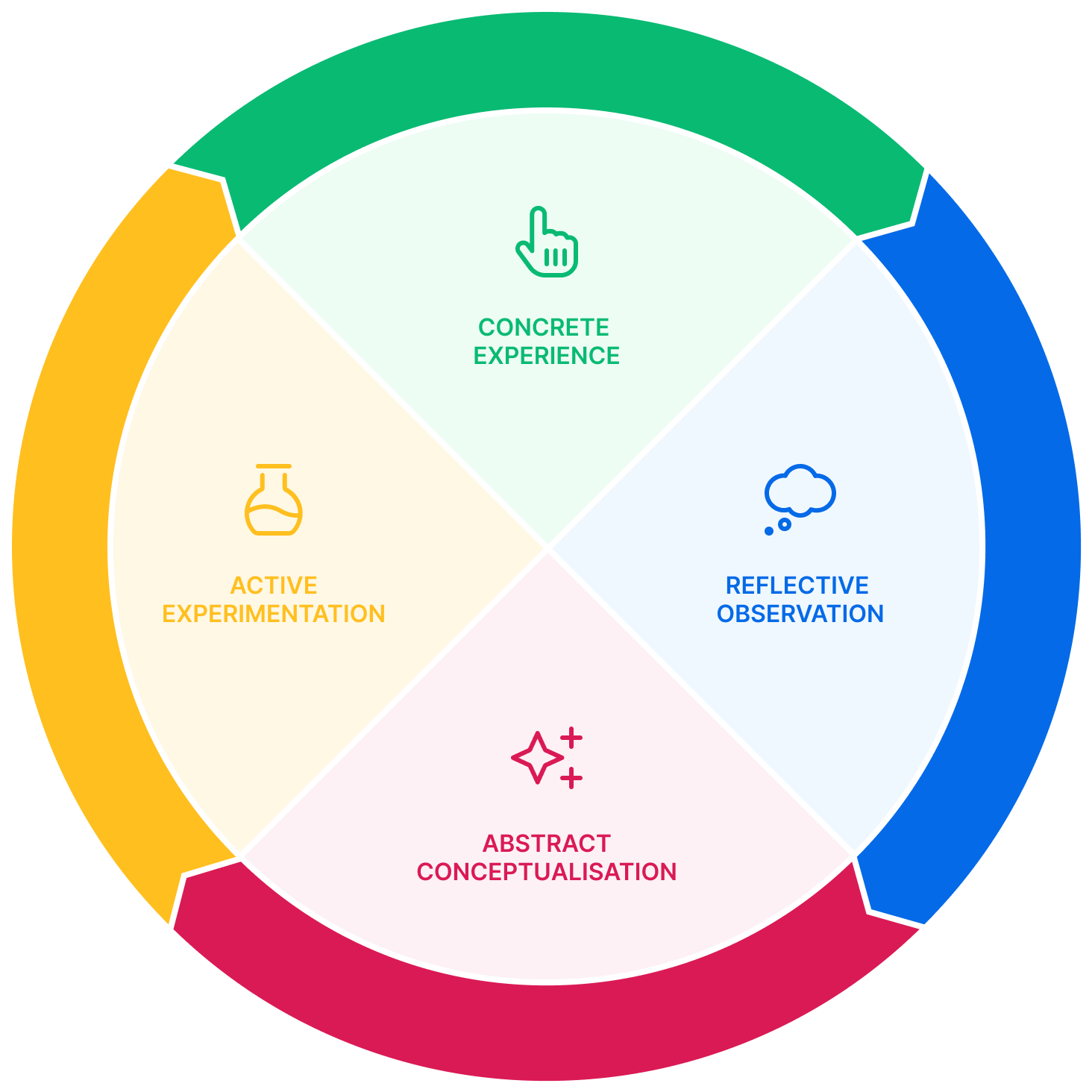
Collaborative and fun training games
One of the fundamental principles of adult learning is experiential learning, which gives participants the chance to use skills and knowledge in a practical way.
Asking trainees to utilize their creative or critical thinking skills in the form of a game can help create an experiential learning experience and enliven the group. They’re a great way to enhance group dynamics and improve communication between trainees too.
Marshmallow challenge with debriefing
Marhsmallow Challenge is a classic team building game that works well in a training environment by asking participants to work together as a team and engage their problem solving skills.
Start by briefing the team on the task: they must build the tallest free-standing structure out of 20 sticks of spaghetti, one yard of tape, one yard of string, and one marshmallow, which needs to be on top. After each team has presented their marshmallow tower and a winner has been crowned, conduct a debriefing where participants will reflect on what went well, what could have been improved and what learnings they will take from the exercise.
Human Machine
Effective collaboration is an important aspect of how groups operate. Collaboration and camaraderie is important in a training environment too, and this training game is an effective way of engaging a group collaboratively. Start by getting the group into a circle. Let them know that together, they will be creating a human machine where each person will be a part of that machine.
Start by asking one person to enter the middle of the circle while making the sound and physical movement of one part of the machine. After 5 seconds, another person enters the circle and connects to the first person, also making a sound and a movement.
Continue until everyone has been connected to the machine. In small groups, you can also deconstruct the machine one piece at a time. Use this training game when you’re looking to encourage creative thinking and collaboration in your trainees.
Blind Square – Rope game
Fun training games where participants need to engage their problem solving brain while working as a team can be a great counterpoint to heavier training material and presentations. In this training game, start by tying a long piece of rope into a circle.
Instruct trainees that they’ll need to turn the circle into a square but must do so while blindfolded. They’ll have 15 minutes to plan their actions but must not touch the rope. They’ll then have 10 minutes to create the square as a team while wearing their blindfolds.
This is a simple but effective training game that builds communication skills and can also be used to start a conversation about collaboration, planning and problem solving.
Helium Stick
Training activities don’t need to be complicated in order to create engagement in your group and help pave the way for collaborative learning. Helium Stick is a fun and engaging training game that is a simple and effective way to encourage presence and collaboration in the group.
Start by asking everyone in the group to form two rows, facing each other. Next, ask them to put their index fingers out and rest a long, thin rod on everyone’s fingers, ensuring its level. Finally, ask the group to try moving the rod down while ensuring everyone’s fingers remain in contact with the rod. The result is a fun, engaging game that helps trainees land in the session and create some levity in your agenda.
Human Knot
This physical training game is a fun energizing game that also doubles as an exploration of the differences between self-organization and command-control management. For any training that contains elements of group dynamics and human systems, this is a great choice of training icebreaker or energizer.
Start by getting trainees into groups of 7-16 people. Next, ask everyone to get into a circle and close their eyes. Next, they should link hands with two different people in the group and then open their eyes. The group must then untangle themselves without breaking any links. This training game often results in a lot of laughter and fun, while debriefing it can help give groups an understanding of how certain dynamics can manifest within a group.
Virtual Scavenger Hunt
Scavenger hunts on a specific topic can be a great way to get participants engaged in their own learning and encourage proactive exploration of a training topic. Start by creating a list of items that participants need to find that relate in some way to the topic of your training.
For example, if you were running training on conflict resolution, your list might include finding a series of quotes or articles to cover each step of the resolution process, finding or taking photographs to represent four emotions experienced as a result of conflict, collecting the social media profiles of 3 thought leaders in the space, or even creating a spotify playlist of songs relating to core feedback principles.
Creativity is vital here, but the end result can be an engaging exercise that not only reinforces learning but also creates lots of space for fun.
Games and activities for closing a training session
The closing stages of your training session can be among the most important when it comes to reinforcing learnings and helping your participants retain the key points of your training.
These training activities are designed to give trainees space to reflect on the session, reinforce their learnings and debrief with the group. They can be especially useful if you want to encourage trainees to take action following the training session or create a sense of closure too.
If you’re following the ADDIE model of training design, these closing activities can also help you evaluate the effectiveness of your material and provide crucial feedback for future training sessions.
Letter to Myself
The best training sessions often result in positive change, whether that’s solving a problem or enabling trainees to do something they couldn’t do before. That said, it’s not uncommon for some participants to struggle to retain or implement learnings after the training. This training activity is a great way to avoid that issue.
Start by handing out pens and postcards/paper to the group and explain that everyone is going to write a letter to their future selves. In that letter, they’ll explain what they wish to achieve by the time their future selves open the letter.
You can add additional prompts such as, “I want to remember…” “I want to make a positive change because…” or “The biggest takeaway from today is…” to help guide the group and ensure participants are well positioned to retain and use their new knowledge in the future.
I used to think…But now I think…
Effective training is all about creating positive change. In this closing training activity, participants are asked to reflect on what they’ve learned and how their knowledge or perspective has changed as a result of what they’ve learned. Giving immediate feedback in this way can help surface valuable insights and cement learning too.
First, trainees will consider what they thought or knew about your training topic before the session, then they’ll reflect on what they think or know now. Give a few minutes for solo reflection before group sharing so that everyone is able to gather their thoughts before also enjoying the collective wisdom of other team members.
Artful Closer
Closing a training seminar by asking participants to create a visual representation of something they’ve learned can be an effective way to aid knowledge retention, share insights and create a memorable experience. Start this training activity by asking participants to close their eyes and think about the highlights of the session and choose one of the key lessons they learned.
Next, participants will create an abstract image to represent that learning and which captures the essence of what they’ve learned. After they’re done, trainees then share the images in small groups and try to interpret what each image represents. For a closing activity with a visual edge, Artful Closer is a great choice that can prompt interesting discussions and aid knowledge retention too!
Magical Gifts
Having the members of your group share their takeaways from a training session is a great way to reinforce learnings and create a sense of closure.
In this paired training activity, one person starts by sharing their favourite takeaway from the training session or what action they’re going to take next. The second person listens carefully and then hands them an imaginary gift in response and describes what it is.
For example, if I say that my next step after receiving training on emotional intelligence is to reflect on my experience and prepare for a tough conversation with my boss, the other person might hand me a magical pillow to help me rest and prepare for that conversation or a megaphone to help my voice be heard. After receiving the gift, the first person shows appreciation and explains how they will use the gift before switching.
For particularly heavy training topics, this closing activity can be effective at introducing some levity and kindness while still ensuring people meaningfully reflect on what they’ve learned.
Conclusion
Whether you’re designing live training sessions or blended learning courses, training games and activities can be an effective way to enhance the training experience and create space for experiential learning. Use them alongside tools like Gagne’s instructional design principles in order to design the most effective learning experiences possible.
These games aren’t just about using up time or giving people a break (although that’s also a worthy cause!) – activities like these can help engage participants and create a memorable experience that ensures learning is retained long after the session is over.
Want to go further? Check out our guide on how to design a training session plan and create an agenda that will set the foundation for an effective session.
Looking for an example training agenda? Explore this training plan template based on Kolb’s learning cycle and adjust it to your needs.
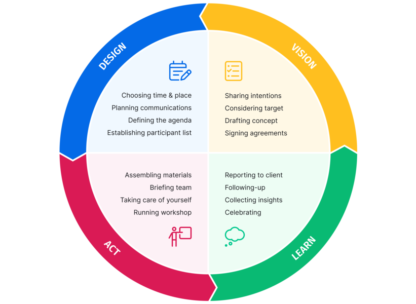
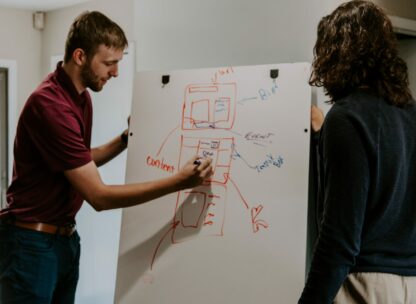

Leave a Comment